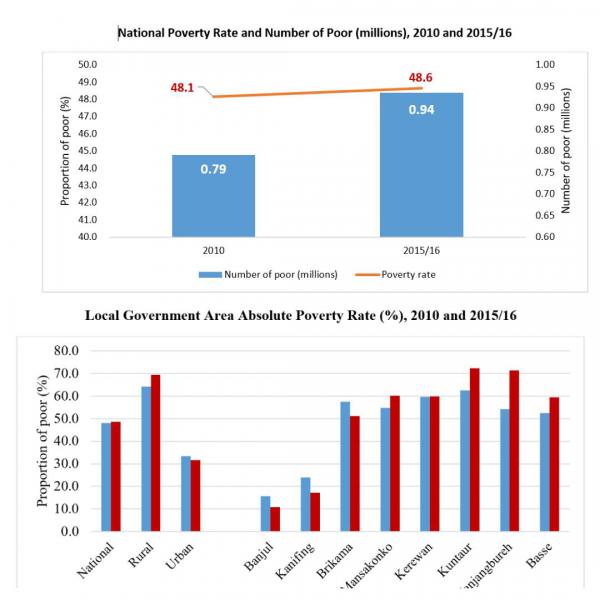
Although, The Gambia’s national poverty rate rose slightly between 2010 and 2015/16 (an increase of 0.5 percentage points), the number of people living in poverty went up from 0.79 million in 2010 to 0.94 million in 2015/16. In both other urban and rural areas, the number of people living in poverty went up but at varying proportions. In the urban areas of Banjul and Kanifing however, the poverty rates went down. Evidence points to poverty being more of a rural phenomenon than urban. Rural poverty rate increased from 64.2 percent in 2010 to 69.5 percent in 2015/16 – an increase of 8.3 percentage points while urban poverty declined by 1.8 percentage points—from 33.4 percent to 31.6 percent. The poor in rural areas account for about 64 percent of the total poor in the country.
While levels of poverty went up during the period of review, the depth and severity of poverty declined poverty gap index and squared poverty gap index), meaning that the poor were better off in 2015/16 than in 2010. (See Integrated Household Survey, 2015/16)
The dependence on rain-fed agriculture as a source of livelihood makes households susceptible to hunger and reduction in households’ welfare. Efforts are needed to promote irrigation projects and other interventions aimed at increasing agricultural productivity and improving rural people’s access to markets.
Communities also suggested job creation, increased minimum wage and access to credit as strategies to reduce poverty.
Source: IHS 2015/16